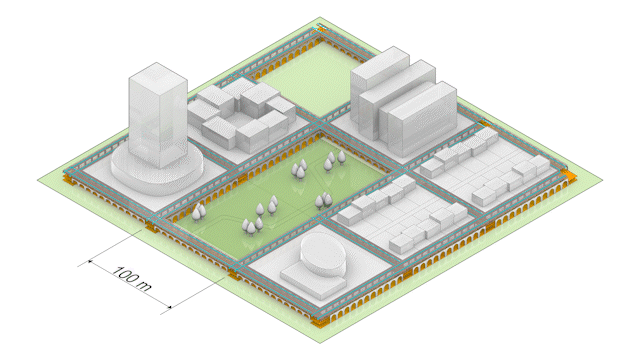Symbiotic Urbanism
Hyundai x RISD take on adaptive ecologies
# Architecture #Urban Design #Biomimicry

This proposal is a city paradigm based on shared infrastructural services. Such as food production, manufacture, urban mobility, and electricity, water.

This system is inspired by the functional pattern of lichen, especially its efficiency and adaptiveness. Lichen is a collaborative colony of fungi and algae. It is adaptive to environmental changes and survives harsh conditions. This is a result of the two partners sharing their services in survival, defense, and reproduction.
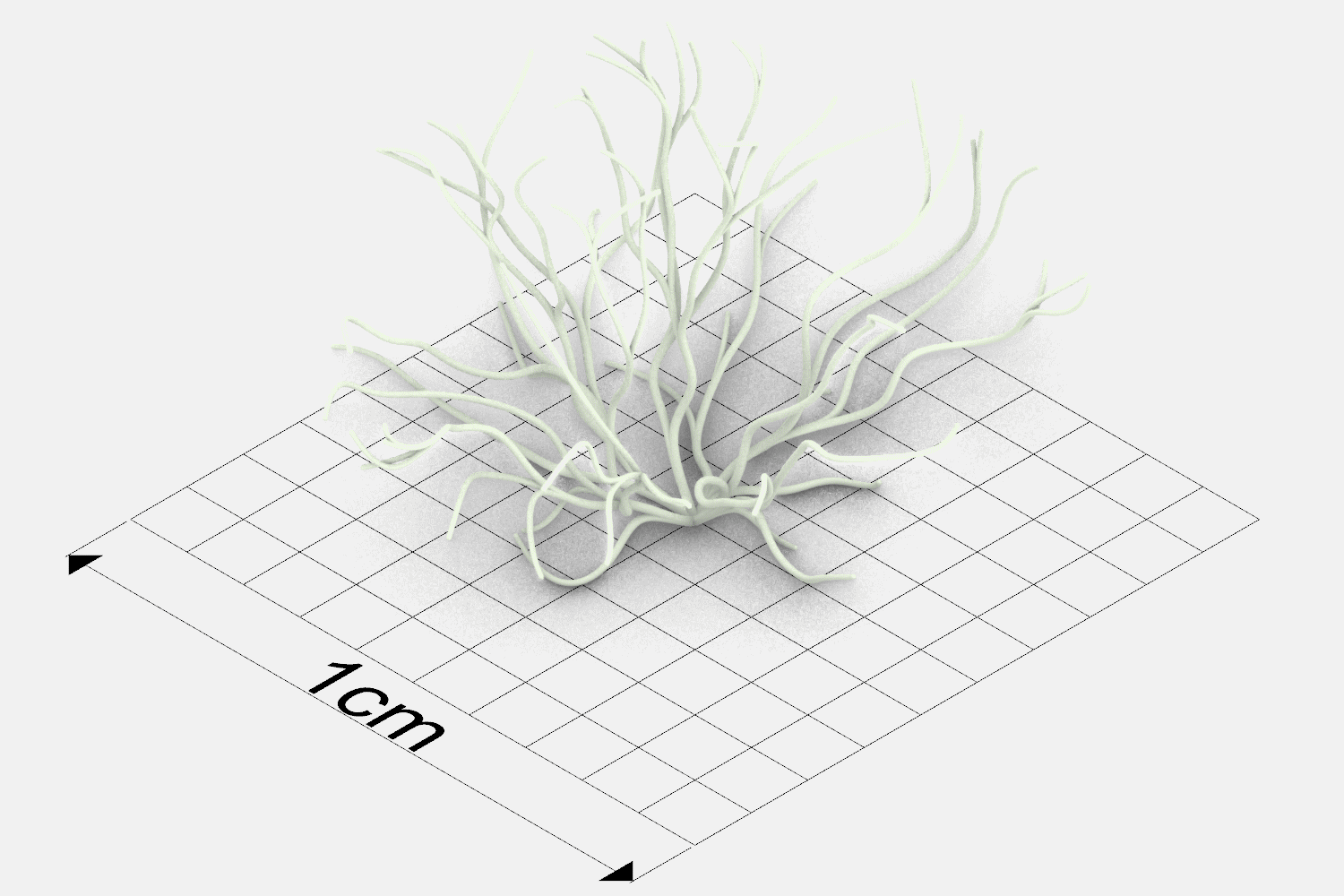
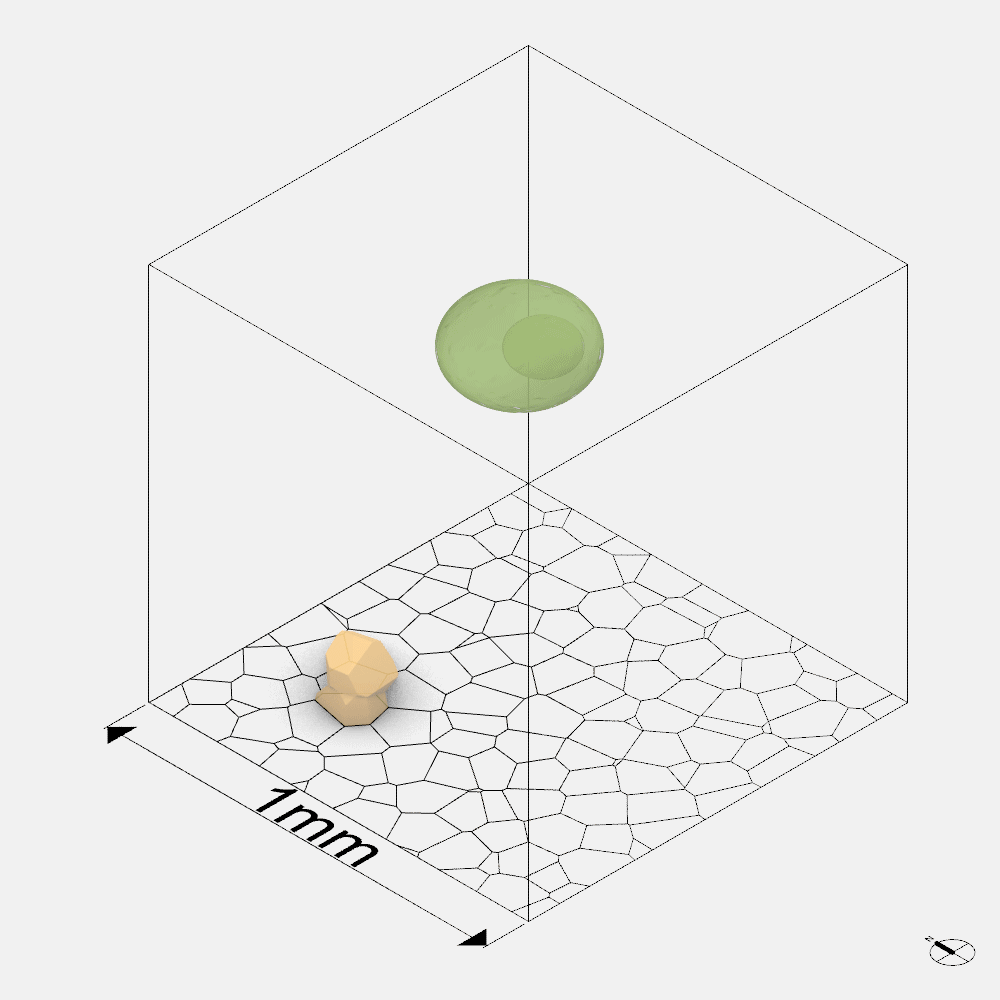
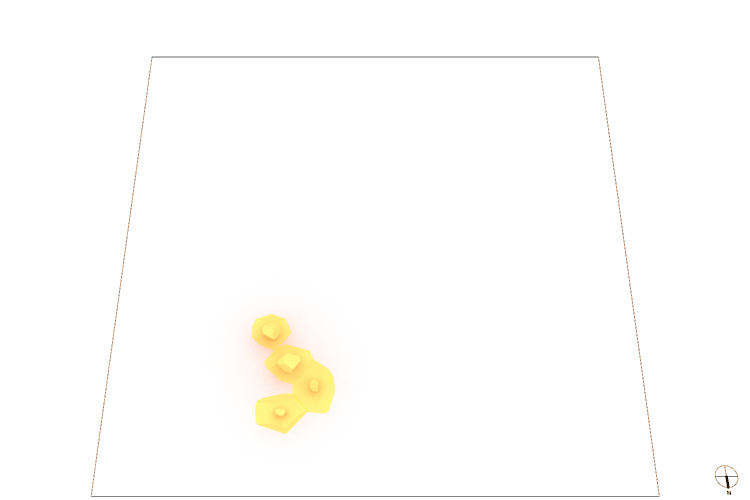

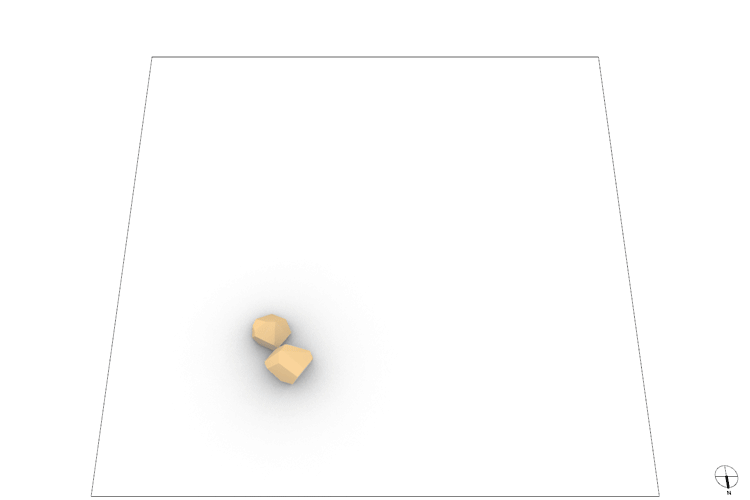
First, a grid of piles is driven to bear on bedrocks. Then the infrastructural tunnels are built upon it on ground level. This is where the moving units travel along, and pedestrian walks on. The blocks of buildings are then built, supported by the tunnels. In this way, the city’s total amount of excavation from construction is reduced to a fraction of every building digging the ground. City blocks are like plug-ins, hence the ease of urban renovation and reconfiguration.
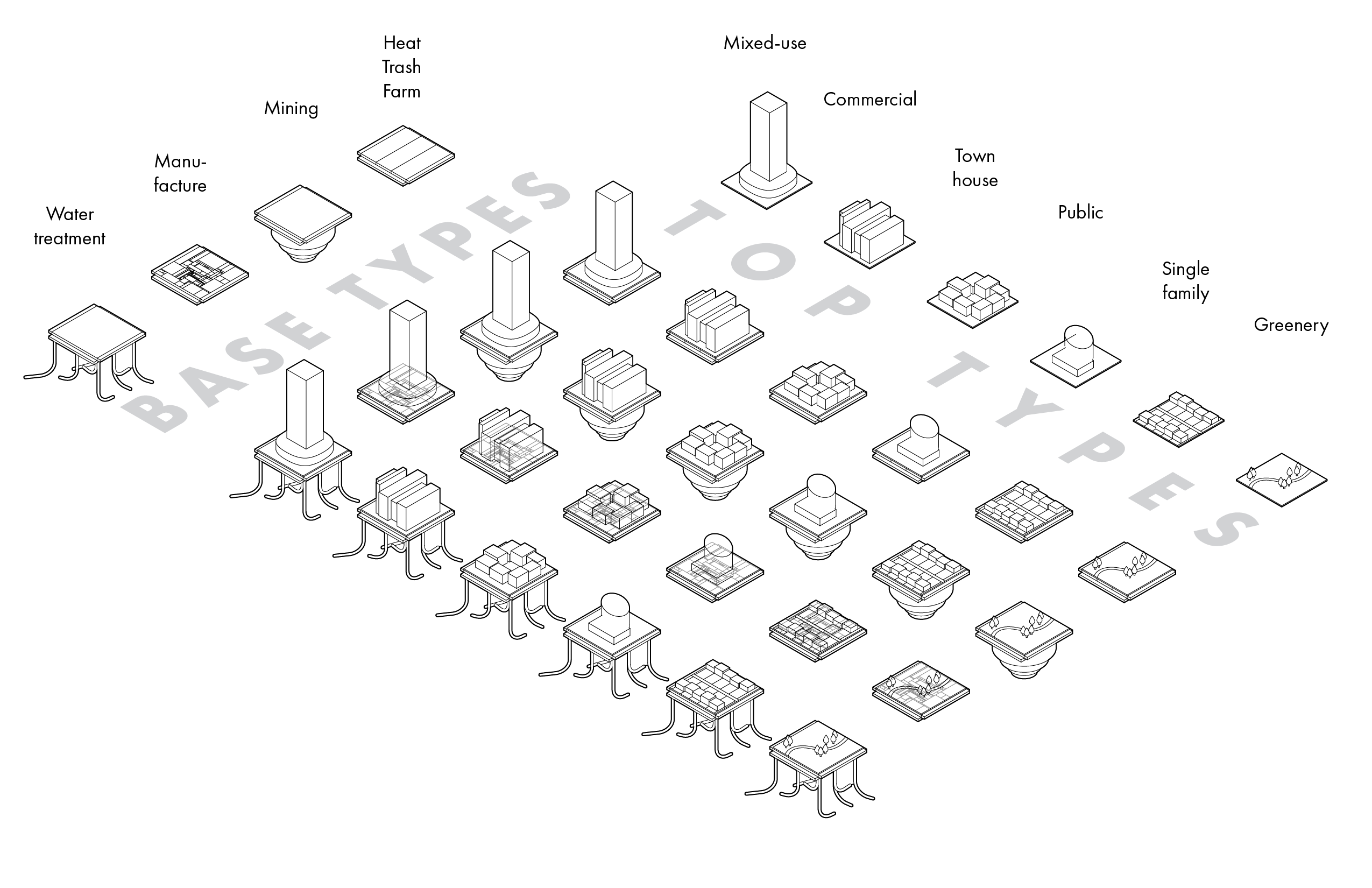

This system is crowdsourced. The idea is that anyone could be both producer and consumer. There is no differentiation between the two. The incentive system is self-sustainable. Initiating tasks costs credits, and helping others in any of those steps would gain credits.

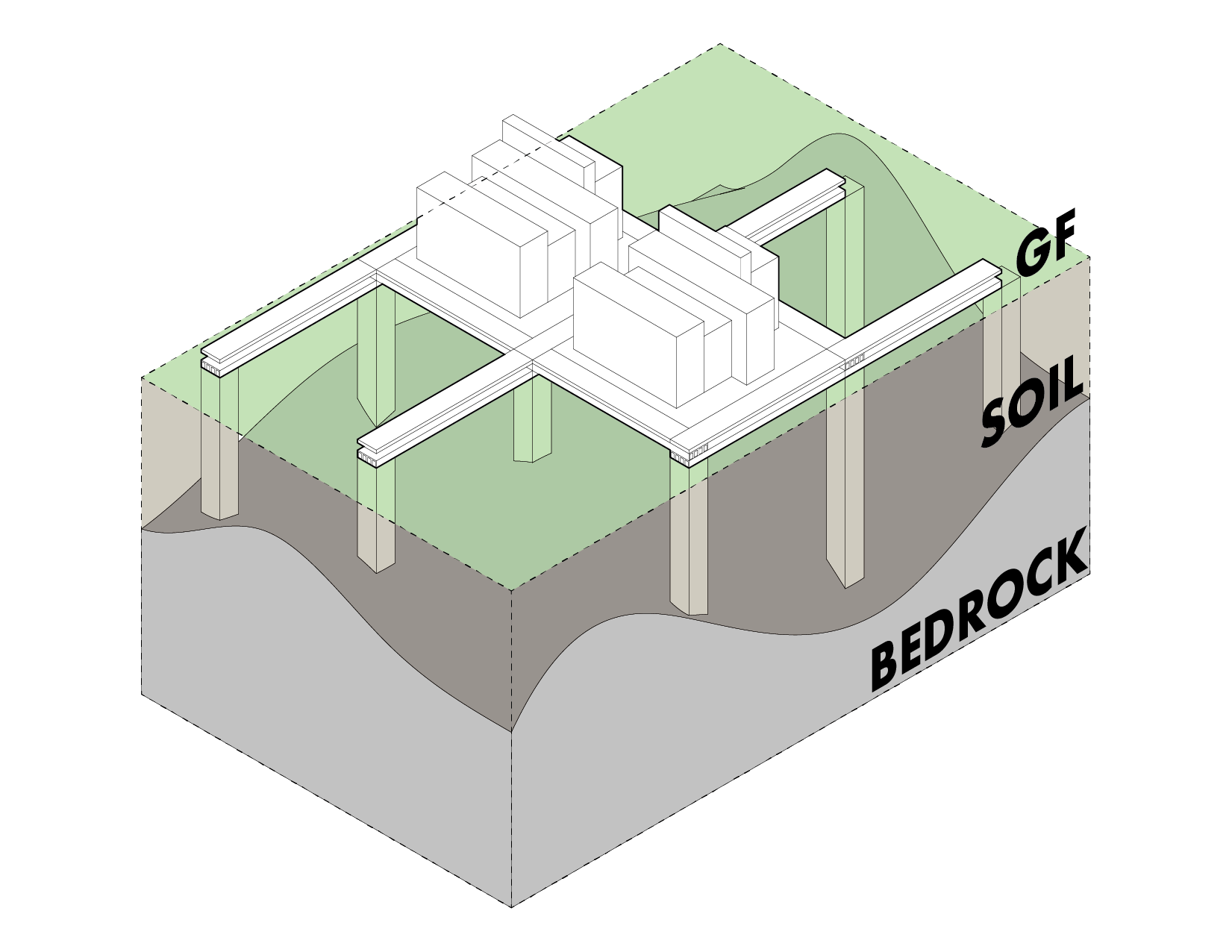
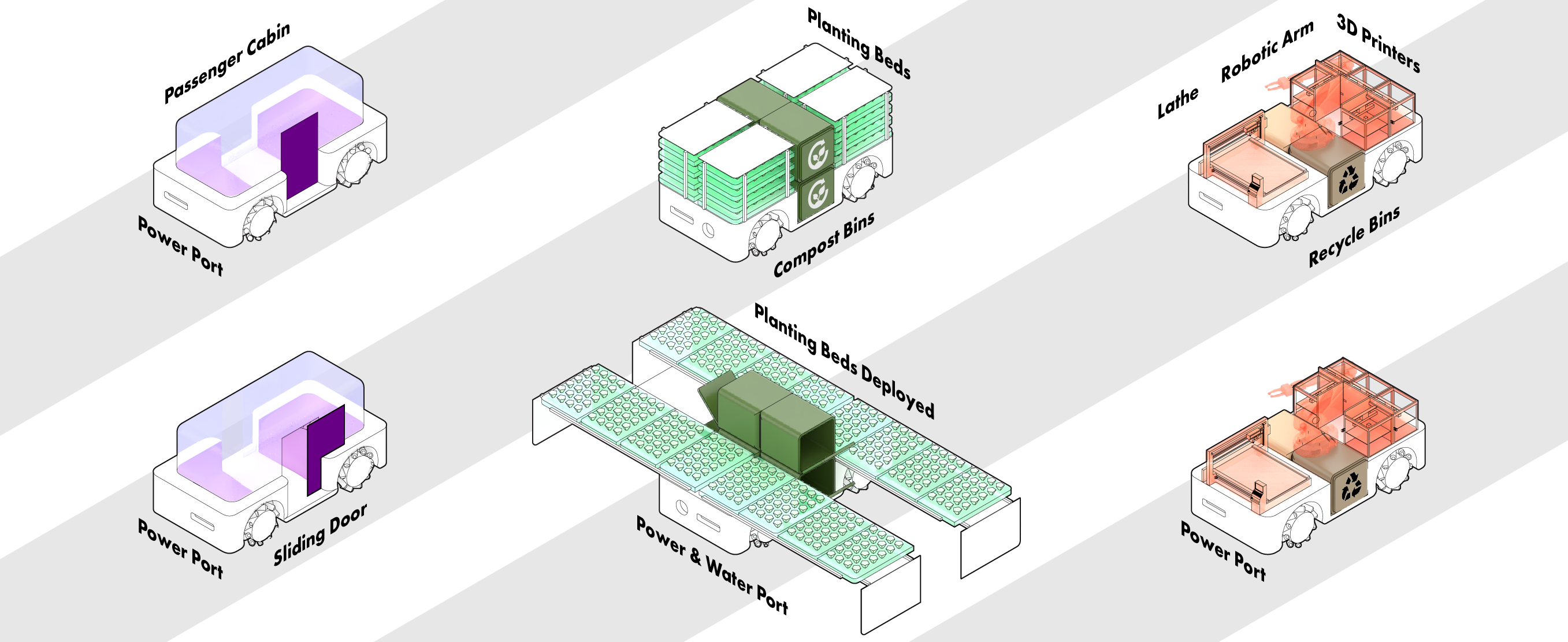

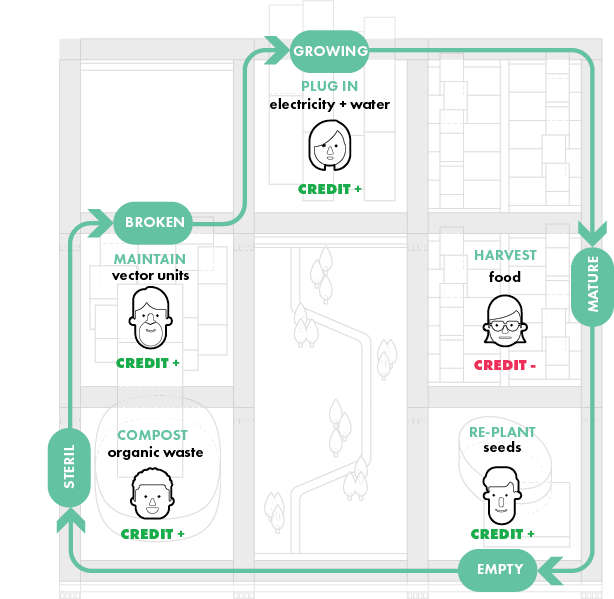

The traveler unit is autonomous taxis that replace moth uber and metro system. It uses IoT to predict the next ride and prepare in advance.
The planter unit grows food in its planting bed and houses compost bins to collect organic waste from households. Plug-in electricity and water, the plants grow. It could expand to an operational position for harvest
The maker unit is a mini-factory for customized objects. It manufactures the ordered object and delivers it.

